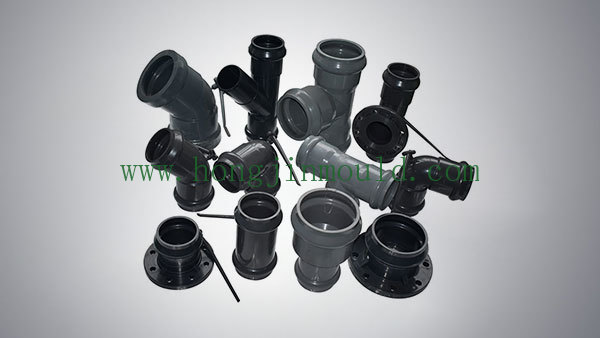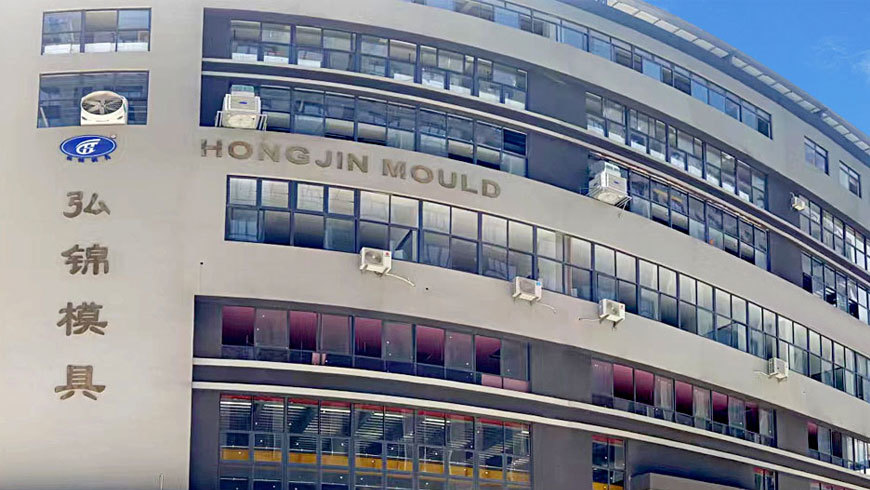Sewage drainage PVC three-way pipe fitting mold
Specialize in manufacturing all moulds of pipe fitting series: pvc drainage pipe fitting mould, ppr cold and hot water pipe fitting mould, PE pipe fitting mould...
Keywords:
Plasticpipe fittings moulds
Category:

Hotline:
Sewage drainage PVC three-way pipe fitting mold
Detail
The PVC three-way pipe fitting mold for sewage drainage is a precision injection mold with high technical content and complex structure. The key to its success lies in the ingenious design of the multi slide core pulling mechanism, efficient and balanced cooling system layout, optimized pouring system to ensure the quality of melt flow and welding lines, and the selection of corrosion-resistant and wear-resistant high-quality mold materials for high-precision processing and polishing. Excellent molds are the foundation for producing PVC drainage pipe fittings that meet standards, are of reliable quality, and have market competitiveness.
Core functions and target products:
Product: Tee Fitting made of PVC material.
Types: Mainly equal diameter tees (with three ports having the same diameter) and reducing tees (with one port having a different diameter from the other two, commonly seen as larger main pipes and smaller branch pipes). It may also include variants such as tees with inspection ports.
Application: Used for branch connections in sewage (domestic sewage, rainwater, etc.) discharge pipeline systems.
Standard: The pipe fittings produced by molds must comply with relevant national or industry standards (such as Chinese GB/T 5836, international ISO 3633, American ASTM D2665, etc.), ensuring that the dimensions, wall thickness, socket depth, pressure rating (SDR series), and physical properties (such as Vicat softening temperature and drop hammer impact) meet the standards.
Mold type:
Injection mold: This is the most important and efficient way to produce PVC pipe fittings. Molten PVC raw materials are injected into a closed mold cavity under high pressure, cooled and solidified, and then the mold is opened to eject the product.
Structure: Usually a three plate mold or hot runner mold (to improve efficiency and reduce waste), containing a complex slider core pulling mechanism.
Key elements of mold design:
Number of cavities: Depending on the tonnage, product size, and production requirements of the injection molding machine, it can be a single cavity, double cavity, or multi cavity mold (such as 4 cavities, 8 cavities, or even more). Multi cavity molds improve efficiency, but their design and manufacturing are more complex and costly.
Classification surface design:
The main parting surface is usually located in the axial center of the pipe fitting.
The most crucial thing is to handle the core pulling in three branch directions. A precise slider mechanism (usually driven by inclined guide columns or hydraulic/cylinder) needs to be designed to achieve lateral core pulling in three vertical directions. Ensure smooth slider movement, accurate positioning, reliable locking, and avoid flying edges.
The design of the parting surface should ensure that the product is easy to demold, and the position of the parting line does not affect the sealing surface and appearance of the pipe fittings.
Pouring system:
Cold runner: main runner ->diversion runner ->sprue. The design needs to ensure that the melt can simultaneously, uniformly, and quickly fill the three branches, avoiding stagnation and fusion lines in the sealing area of the socket or critical stress areas.
Hot runner: more advanced, reduces waste (channel condensate), shortens molding cycle, improves melt flow balance, especially suitable for multi cavity molds. High requirements for temperature control.
Gate type: Common side gate or hidden gate (automatic cut-off), usually located on non critical exterior surfaces and socket areas of the pipe body or branch.
Cooling system:
crucial! PVC has poor thermal conductivity and a narrow processing temperature window. Uneven cooling can lead to product deformation, high residual stress, unstable dimensions, and even cracking.
It is necessary to design dense and balanced cooling water channels inside the mold core, cavity, and slider (usually using copper pipes or drilling holes directly on the mold steel), with special attention paid to the cooling efficiency at the three-way intersection (usually with thicker walls).
The goal is to achieve fast and uniform cooling, shorten the molding cycle, and ensure product quality.
Top out system:
Use ejector pins, push tubes, push plates, or combination methods.
The design needs to ensure that the product is smoothly ejected and evenly stressed, avoiding whitening, deformation, or piercing (PVC pipe fittings have relatively thin wall thickness).
The top out position is usually selected on the back of the flange, reinforcement ribs, or non exposed areas of the pipe wall.
Exhaust system:
When the mold is closed, the air inside the cavity and the small amount of gas generated by the decomposition of PVC melt must be effectively discharged, otherwise it will cause problems such as trapped gas, burning, insufficient filling, and obvious welding lines.
Reasonable exhaust grooves (usually 0.02-0.04mm in depth) or breathable steel inserts should be provided at the end of the melt flow, the sliding block fitting surface, and the insert fitting surface.
Material selection:
Mold cavity/core/slider: High quality mold steel with wear resistance, corrosion resistance, and good polishing performance must be selected. Commonly used:
Pre hardened plastic mold steel: such as P20/1.2738 (718), economical and practical.
Corrosion resistant stainless steel: such as S136/4Cr13420 modified type, especially suitable for PVC (due to the corrosive nature of HCl produced by PVC decomposition).
High performance hot work die steel, such as H13/4Cr5MoSiV1, has high hardness, good wear resistance, and long service life.
The surface usually requires high gloss mirror polishing (Ra<0.1 μ m) or texture treatment (such as bite marks) to meet the appearance requirements of the product (smooth inner walls facilitate drainage and reduce fouling).
Key moving components such as guide columns, guide sleeves, inclined guide columns, and top pins need to be quenched and hardened to ensure wear resistance and service life.
Guidance and positioning:
The precision guide column and guide sleeve ensure precise clamping of the dynamic fixed mold.
Cone positioning blocks or Rectangular Locks provide secondary precise positioning and withstand lateral forces, preventing displacement caused by force on sliding blocks and other mechanisms.
Demoulding slope:
All surfaces parallel to the demolding direction (inner and outer walls, reinforcement positions) must be designed with a reasonable demolding slope (usually 0.5 ° -2 °) to ensure smooth demolding of the product without scratching the surface.
Manufacturing difficulties and challenges:
Complex geometric shape: The three-dimensional spatial structure of a tee, especially the handling of intersections.
Multi directional core pulling coordination: The synchronous movement, positioning, and locking design of the three sliders are the core difficulties that require precise calculation.
Uniform cooling: Ensure that areas with large differences in wall thickness (main pipes, branch pipes, intersections) can be uniformly cooled to prevent deformation.
Melt flow equilibrium: In multi cavity molds or complex cavities, ensure that the melt can simultaneously, equally, and isobaric fill each branch end.
Welding line strength and appearance: The fusion of molten metal at the intersection of three-way joints will inevitably produce welding lines. The design needs to optimize the gate position and runner, guide the welding line to non critical areas as much as possible (such as non pressure bearing surfaces and rib positions), and use process parameters such as mold temperature and injection speed to improve the welding quality.
Corrosion resistance requirements: Mold steel and surface treatment must resist trace HCl corrosion during PVC processing.
High precision requirements: The fitting size, roundness, and taper of the pipe socket require extremely high precision, which directly affects the sealing performance.
Application and maintenance:
Application: Installed on large injection molding machines, batch produced with PVC resin (usually SG5 type) and corresponding process parameters.
Maintenance: Regular maintenance is crucial, including:
Clean the cavity, flow channel, and exhaust groove.
Check the wear and lubrication of moving parts such as sliders, guide posts, guide sleeves, and ejector pins.
Check if the cooling water circuit is unobstructed.
Check the surface of the mold for rust and damage, and promptly repair and polish it.
Previous
Next
Previous
Wire conduit mold
Next
RELATED MOULDS
MESSAGES

We provide exceptional products and quality services, ensuring that our products meet the relevant standards of various countries, and earning the trust and support of our customers.
CONTACT
103, Building 10, Lecheng Molding Industrial Park, Xinqian Street, Huangyan District, Taizhou city, Zhejiang Province









